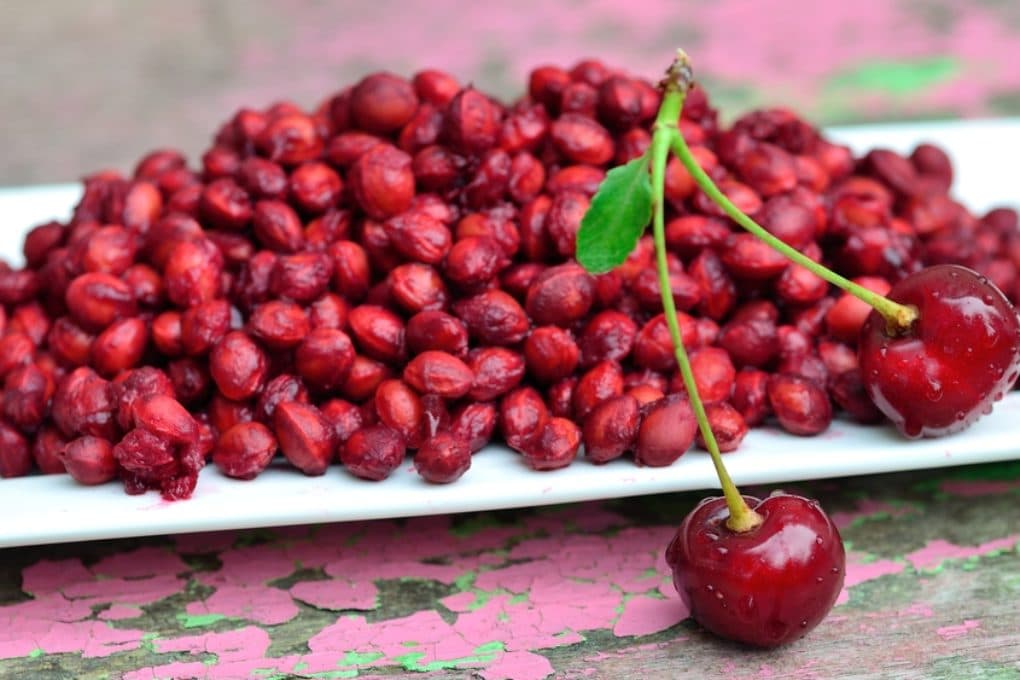Planting cherry pits can be an exciting and rewarding journey for any gardening enthusiast. If you've ever wondered how to plant cherry pits and grow your own cherry tree, you're in the right place. This comprehensive guide will walk you through every step, from selecting the right cherry pits to nurturing your sapling into a thriving tree. Whether you're a seasoned gardener or a beginner, planting cherry pits is a fulfilling process that brings the joy of nature to your backyard. So, roll up your sleeves and let's dive into the world of cherry tree cultivation!
Cherries are not only delicious but also packed with nutrients, making them a favorite fruit for many. Have you ever thought about growing your own cherry tree from pits? It’s a fantastic way to enjoy fresh cherries right from your garden. This guide will help you understand the nuances of planting cherry pits, offering tips and tricks to ensure your tree flourishes. From choosing the right soil to protecting your sapling from pests, we'll cover everything you need to know.
Gardening is a fulfilling hobby that connects us with nature, and planting cherry pits is a perfect way to start. With the right guidance, patience, and care, you can transform a simple cherry pit into a majestic tree. This guide aims to provide you with all the necessary information to embark on this green adventure. Let's explore the steps and techniques involved in planting cherry pits and nurturing them into beautiful cherry trees.
Read also:Is Michelle Obama A Trans Woman Debunking The Rumors And Uncovering The Truth
What Tools and Materials Do You Need for Planting Cherry Pits?
Before you start planting cherry pits, it’s crucial to gather all the necessary tools and materials. Having the right equipment will make the process smoother and more efficient. Here's a list of essentials:
- Cherry pits (preferably from fresh cherries)
- Potting soil
- Planting pots or containers
- Gardening gloves
- Watering can
- Pruning shears
- Mulch
- Fertilizer
These items will ensure that your cherry pits have the best start possible. Remember, investing in quality tools and materials will pay off in the long run, as they contribute to the health and growth of your cherry tree.
How to Select the Best Cherry Pits for Planting?
Choosing the right cherry pits is the first step towards successful planting. Not all cherry pits are created equal, so it's important to select high-quality ones. Look for pits from fresh, ripe cherries that are free from cracks or blemishes. Ideally, the pits should be harvested from locally grown cherries, as they are more likely to thrive in your region's climate. Additionally, consider the variety of cherry you want to grow, as different types may have varying growth requirements.
How Long Does It Take to Grow a Cherry Tree from a Pit?
One of the most common questions among beginners is, "How long does it take to grow a cherry tree from a pit?" The answer depends on various factors, including the type of cherry, climate, and care provided. On average, it can take anywhere from 3 to 7 years for a cherry tree to bear fruit. However, with proper care and ideal conditions, your tree may produce cherries sooner. Patience is key when planting cherry pits, as it’s a long-term investment in your garden's future.
What Are the Steps Involved in Planting Cherry Pits?
Once you have your cherry pits and tools ready, it’s time to begin the planting process. Follow these steps to ensure your pits have the best chance of germinating and growing into healthy trees:
- Prepare the pits by cleaning them thoroughly to remove any residue.
- Stratify the pits by placing them in a container with moist soil and storing them in the refrigerator for 8 to 12 weeks. This mimics the natural winter conditions necessary for germination.
- Plant the pits in pots filled with well-draining potting soil, about 1 inch deep.
- Water the soil regularly and place the pots in a sunny location.
- Once the saplings grow a few inches tall, transplant them into larger pots or directly into the ground.
Following these steps will increase the likelihood of successful germination and growth. Remember to monitor your saplings closely and adjust care as needed.
Read also:Mitchell International Airport Arrivals Your Ultimate Guide To Navigating The Airport With Ease
Where Should You Plant Your Cherry Pits?
Choosing the right location is crucial for planting cherry pits. Cherry trees require plenty of sunlight, so select a spot in your garden that receives at least 6 to 8 hours of direct sunlight daily. Ensure the soil is well-draining and has a pH level between 6.0 and 6.8. If you’re planting multiple trees, space them at least 20 feet apart to allow for proper growth and airflow.
How Much Water Do Cherry Trees Need?
Watering is a critical aspect of caring for cherry trees grown from pits. Young saplings need consistent moisture to establish strong roots, but overwatering can lead to root rot. A general rule of thumb is to water deeply once a week, adjusting based on weather conditions and soil type. Mulching around the base of the tree can help retain moisture and regulate soil temperature.
What Are Common Challenges in Growing Cherry Trees from Pits?
While planting cherry pits is a rewarding experience, it does come with its challenges. Pests, diseases, and environmental factors can affect the growth of your tree. Here are some common issues and how to address them:
- Pests: Aphids, mites, and borers can damage your tree. Use organic insecticides or introduce beneficial insects like ladybugs to control pest populations.
- Diseases: Fungal infections such as brown rot and powdery mildew can affect cherry trees. Regular pruning and proper air circulation can help prevent these issues.
- Climate: Extreme temperatures and harsh weather conditions can stress your tree. Consider using protective coverings during extreme weather events.
Being aware of these challenges and taking proactive measures will help ensure the health and longevity of your cherry tree.
How Can You Prune a Cherry Tree Grown from a Pit?
Pruning is an essential part of maintaining a healthy cherry tree. Regular pruning promotes strong growth, improves fruit production, and enhances the tree's overall shape. When pruning a cherry tree grown from a pit, focus on removing dead or diseased branches, thinning out overcrowded areas, and shaping the tree for optimal sunlight exposure. Aim to prune during the dormant season, typically late winter or early spring, to minimize stress on the tree.
How to Protect Your Cherry Tree from Pests and Diseases?
Protecting your cherry tree from pests and diseases is vital for its long-term health. Here are some strategies to consider:
- Regularly inspect your tree for signs of pests or disease.
- Use organic pesticides or natural remedies to control pest infestations.
- Practice good garden hygiene by removing fallen leaves and debris around the tree.
- Ensure proper air circulation by pruning excess foliage.
By staying vigilant and addressing issues promptly, you can keep your cherry tree thriving.
What Are the Benefits of Planting Cherry Pits?
Planting cherry pits offers numerous benefits beyond just growing fruit. It’s an opportunity to connect with nature, learn about plant biology, and enjoy the satisfaction of nurturing something from seed to harvest. Additionally, cherry trees can enhance the aesthetic appeal of your garden and provide a habitat for local wildlife. The process of planting cherry pits also teaches patience and perseverance, valuable lessons for both adults and children.
Why Should You Try Planting Cherry Pits?
If you’re wondering why you should try planting cherry pits, consider the following reasons:
- It’s a cost-effective way to grow your own cherries.
- You can experiment with different cherry varieties.
- It’s a fun and educational activity for the whole family.
- Cherry trees can beautify your garden and increase property value.
With so many benefits, planting cherry pits is a worthwhile endeavor for any gardener.
How to Plant Cherry Pits: Final Tips for Success?
To summarize, planting cherry pits requires preparation, patience, and care. Start by selecting high-quality pits and stratifying them properly. Choose a suitable location with ample sunlight and well-draining soil. Water your saplings consistently and protect them from pests and diseases. With dedication and attention to detail, you can successfully grow your own cherry tree from pits.
Conclusion: Embrace the Joy of Growing Your Own Cherry Tree
Growing a cherry tree from pits is a fulfilling journey that connects you with nature and rewards you with delicious fruit. By following the steps outlined in this guide and addressing common challenges, you can enjoy the satisfaction of nurturing a cherry tree from its earliest stages. Remember, the key to success lies in providing the right conditions and care. So, grab your tools, gather your cherry pits, and embark on this green adventure today!
Table of Contents
- What Tools and Materials Do You Need for Planting Cherry Pits?
- How to Select the Best Cherry Pits for Planting?
- How Long Does It Take to Grow a Cherry Tree from a Pit?
- What Are the Steps Involved in Planting Cherry Pits?
- Where Should You Plant Your Cherry Pits?
- How Much Water Do Cherry Trees Need?
- What Are Common Challenges in Growing Cherry Trees from Pits?
- How Can You Prune a Cherry Tree Grown from a Pit?
- How to Protect Your Cherry Tree from Pests and Diseases?
- What Are the Benefits of Planting Cherry Pits?

